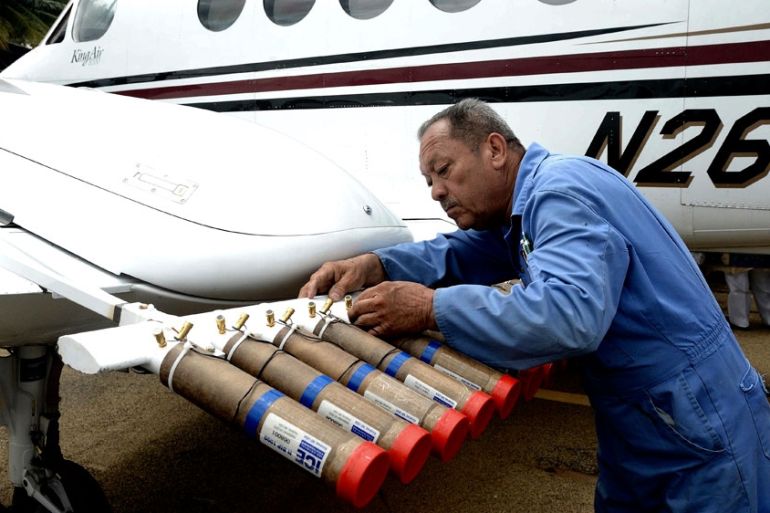Cloud-seeding experiments take off in India
The government hopes to enhance rain in drought-hit Karnataka

A cloud-seeding project is finally under way in the Indian state of Karnataka.
The experiment hopes to bring extra water to the state that has seen three years of drought.
Keep reading
list of 4 itemsRainfall set to help crews battling wildfire near Canada’s Fort McMurray
How India is racing against time to save the endangered red panda
The Last Shark
The project, named Varshadhare, has been delayed by 10 days, after problems getting GST (Goods and Services Tax) clearance for the radar equipment.
The initial flight on Monday at Jakkur Airfield was further delayed, according to the New Indian Express, after missing its scheduled takeoff slot and failing to get clearance from air traffic control until late afternoon.
By the time it took off, most of the clouds had cleared, but officials noted that this was just a demonstration flight and the cloud-seeding would begin in earnest from Wednesday.
Over the next 60 days, a small plane will spray sodium chloride, potassium chloride and silver iodide into clouds in an attempt to increase precipitation across the catchment areas of major rivers in the state.
The theory behind cloud-seeding is fairly simple. Although ice plays an important role in rain development in colder parts of the globe, in warm climates such as that of India, rain usually falls when tiny water droplets in a cloud bump into each other.
As the droplets collide, they combine and become bigger until eventually they are too heavy to be suspended in the air, and they fall towards the ground.
Therefore to encourage rain in India, a substance which attracts water, such as sodium chloride (table salt) or potassium chloride, is sprayed into the clouds.
The technique is only possible if there are clouds already present in the region, therefore the project has been scheduled to coincide with the summer monsoon.
Although the flights have been delayed by more than a week, HK Patil, the minister for rural development, said there was still enough time to increase rains in the seeded areas by 15 to 20 percent.
Cloud-seeding is a technique which is regularly used in China and the United Arab Emirates. However, the increase of rain is far from guaranteed.
The only human involvement is to add particles, and the success, or otherwise, of cloud-seeding depends on the conditions of the atmosphere. If the conditions are benign, the efforts will prove fruitless, but if the conditions are more active, the particles may encourage growth. This could enhance the rain, or it could create a vast storm, triggering flash flooding.
Given that there must be cloud already present in order to attempt cloud seeding, it is very difficult to see if the process works. There is no way to tell precisely how much rain the cloud would have given without being seeded, and therefore whether your injection of particles had any effect at all.
The most extensive study to date shows that cloud-seeding is not as effective at producing rain as was once thought.
Despite this study, the residents of Karnataka will certainly be hoping the cloud-seeding has the desired affect and drought can be avoided in the future.
Additional reporting by Steff Gaulter